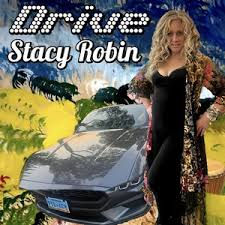CHERYL B. ENGELHARDT, Luminary
- Jonathan Widran
- Aug 2, 2020
- 4 min read
As ironic and even harsh as it sounds to say on the surface, especially when we’re so immersed in year of great uncertainty, I’m deeply grateful for Cheryl B. Engelhardt’s struggles with anxiety. While well established as an independent singer/songwriter and recording artist, she had been seeking some music to help support her new meditation practice. Everything she tried either put her to sleep or pulled her away from the present because it was so melodic.
Serendipitously, she had applied to numerous artist/composer residencies and was accepted at the Mudhouse Artist Residency in Crete, Greece. When she was shown her quarters – a stone room with a grand piano – she instinctively knew her two weeks there were her opportunity to create her own solution.

Her personal discoveries while in that rarefied acoustic environment now have the power to improve the mental, physical, emotional and spiritual health of everyone. Her extraordinary debut new age/ambient album Luminary is the transcendent result of her tackling those issues via richly impressionistic piano passages, deeply immersive and gently floating atmospheres and soul-resonant atmospheres, a singular hypnotic bell and her ethereal vocals.
There’s something magical and serendipitous about the effortlessness with which Cheryl, a piano player since age 2, trusted her instincts to take her where her ears had never quite gone before. Considering her well-established pop songwriting prowess, had she tried to compose a typical new age/neo-classical album, it would have probably been splendidly melodic – yet sound like every other album we hear in the genre. By listening to that inner light, she’s now able to gift us with a 12-track recording worthy and reflective of its title concept. While each of these six minute plus meditations are probably best experienced as a straight through single hour whole, the names of the tunes each reflect a fresh chapter in the laid back but ultimately empowering narrative.

“The theme that developed was that you are the source of your own light,” Cheryl says. “The titles of the songs reflect the celestial interpretation of the word ‘Luminary’ as well as bringing in some Greek mythology and biology – light being the string that carries through history, humanness and the celestial. Being the source of your own light also translated to the literal recording of the record. While sounding symphonic or synthetic at times, the source is always just a live grand piano, a bell and my voice. Figuratively, each 6-minute piece had a pre-determined idea that was either about attracting (love, abundance) or releasing something (anxiety/negativity). As one listens to each song, they are not forced into some peace they haven’t found yet. Many of the pieces start a little darker, and then musically move the listener to that better place.”
That’s a thoughtful way of saying that Luminary isn’t your typical, instantly infectious and easy flowing glide to happy new age la la land. Cheryl wants us to fully and patiently engage, from the gentle hypnosis of the piano motif and intense, haunting atmospheres of the opening track “Sister of Eos” (a reference to the Greek goddess of the dawn) through the progression through moments of stark piano, soaring echoing voice, quickly edited of ambiences and heart stopping bells of “Bioluminescence.”
The sonic tapestries Cheryl weaves using only her Apogee Mic 96 and crafty electronic editing may, by design, make you too inert to check the titles as she eases from one track to the next. But if you check the titles later, you’ll see you were staying present while caught in the breathy vocal-piano-atmospheric flow of purposefully titled pieces like “Deliquesce,” “Earthshine,” “M. Aurora,” “Mortal Tides,” “Moon Harvest,” “Ataraxy” and the super-breathy exhalence of “Glisten Up.” In a compelling “making of” video Cheryl released along with the project, we learn that on Day 14 of the recording process, choreographer Kara Robertson danced to another gem, “Galileo” (which begins with a more traditional melodic/rhythmic flow before launching into space), in the first public performance of the music.
Understanding the making of the album is important because its location, while beautiful and peaceful, also had its sonic challenges. As Cheryl says, “Each day I had to record around the super loud cicadas, which literally dictated my schedule. I also had to deal with the many Greek stray dogs. When I was recording my vocals, particularly when I was throwing my voice to get high sounds…while they sound quite subtle and quiet, I had to really belt some stuff out (‘Moon Harvest’ is where I jump through four octaves), and on the high notes, the local dogs would be howling at me. So I would record about ten seconds, wait three minutes for them to stop barking, then ten seconds again – quite exciting times.”
And then some. With Luminary, Cheryl opens a glorious door not only to the next phase of her career, but a fresh way forward in content and approach for the ambient/new age genre.
Listen to Luminary here: https://open.spotify.com/album/3XtcBUS9JeiDBcNcYRUsun







Comments